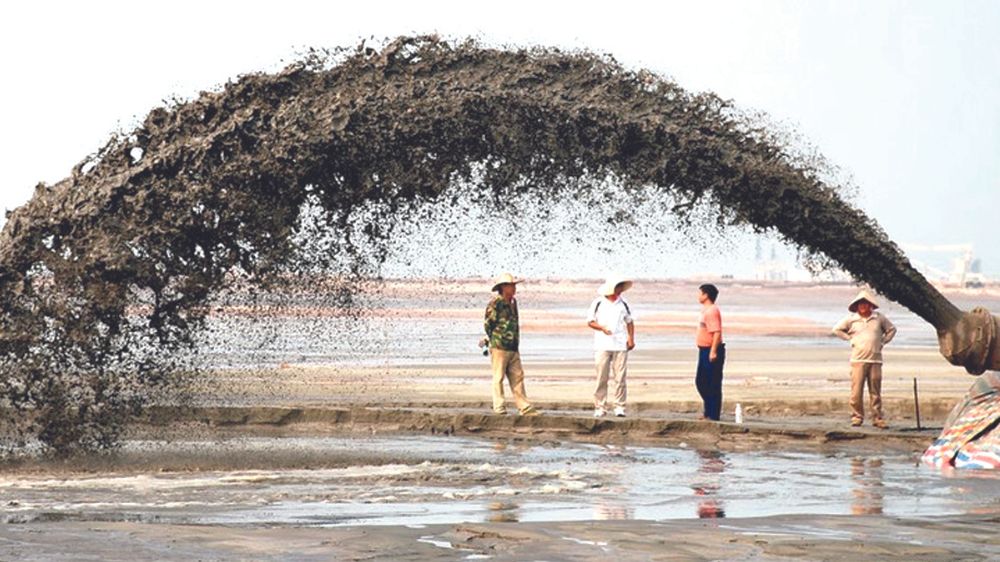As sea levels rise, is land reclamation still a good idea?
Soil and stone could also be excavated from the mainland and dumped along the shore or on the coast of existing islands, gradually expanding the land into the sea.

People have been reclaiming land from the sea for centuries, to control flooding and make more space for agriculture and coastal industries. Traditionally, this meant building a series of dikes to enclose tidal marshes or shallow offshore waters and draining these enclosures to create dry land. In some cases, streams were diverted to carry additional sediment into these areas, building up the land to a higher level. Soil and stone could also be excavated from the mainland and dumped along the shore or on the coast of existing islands, gradually expanding the land into the sea.
Often, when the new coastal land was below sea level, water had to be pumped out over the dikes or emptied through sluices and discharged into the sea. That’s now the case in much of the Netherlands, where around one-third of the country is below sea level and must be artificially drained to keep out the North Sea.
Today, many reclamation projects in rapidly growing urban centers across the Global South have advanced far beyond a simple dike. The increased economic importance of coastal zones, especially in East Asia, the Middle East and West Africa, has spurred a rush to stake a claim in this new land for luxury residential, upscale commercial and industrial space.
Major engineering projects now involve the construction of kilometers of offshore concrete barrier walls, which are filled with substantial amounts of sand, earth, clay or rock, often shipped in from far afield. The reclamation site can also be filled with dredged soil from the nearby seafloor mixed with water, in a process known as hydraulic reclamation. Despite the considerable cost and engineering challenges, coastal land reclamation has become “a global-scale phenomenon” over the last two decades, according to a study published in the journal Earth’s Future early this year. The study, which examined satellite imagery of coastal cities with a population of at least 1 million, found that reclamation projects in 106 cities around the world had altogether created around 2,530 square kilometers (more than 900 square miles) of coastal land, an area roughly the size of Luxembourg.
Nearly 90% of that land was created in East Asia, most often to make way for industry and port facilities catering to the globalised economy. From 2000 to 2020, Shanghai alone added around 350 square kilometers, with Singapore and Incheon, in South Korea, also raising vast new areas. “Urban growth itself has become a pretty big source of profit for China, and in other countries as well,” said Young Rae Choi, an expert in marine and coastal governance and East Asian studies and one of the study’s co-authors. She told DW that coastal space is often seen as the simpler choice, giving urban planners the chance to “start from scratch” and avoid the complications of existing residents and planning restrictions.
Choi, an assistant professor at Florida International University in Miami, said while China stands out because of the size of its projects, it’s by no means alone when it comes to reclaiming land from the sea. “China’s case is as always seen as somewhat special because of the scale of the projects,” she said. “When they do things, it’s very visible.”
Visit news.dtnext.in to explore our interactive epaper!
Download the DT Next app for more exciting features!
Click here for iOS
Click here for Android



